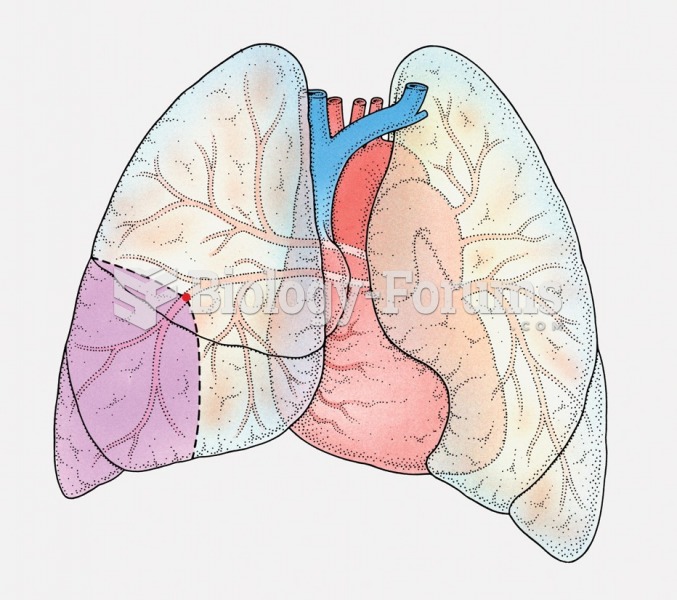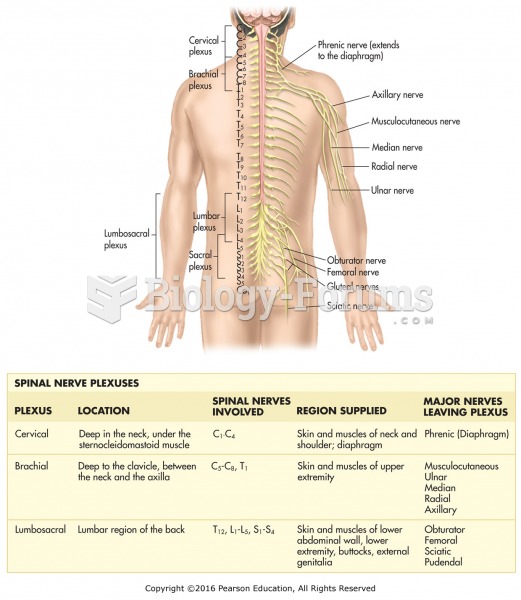|
|
|
Chronic necrotizing aspergillosis has a slowly progressive process that, unlike invasive aspergillosis, does not spread to other organ systems or the blood vessels. It most often affects middle-aged and elderly individuals, spreading to surrounding tissue in the lungs. The disease often does not respond to conventionally successful treatments, and requires individualized therapies in order to keep it from becoming life-threatening.
Approximately one in three babies in the United States is now delivered by cesarean section. The number of cesarean sections in the United States has risen 46% since 1996.
All adverse reactions are commonly charted in red ink in the patient's record and usually are noted on the front of the chart. Failure to follow correct documentation procedures may result in malpractice lawsuits.
Addicts to opiates often avoid treatment because they are afraid of withdrawal. Though unpleasant, with proper management, withdrawal is rarely fatal and passes relatively quickly.
The longest a person has survived after a heart transplant is 24 years.
 Pulmonary embolism. The purple shaded section shows the area of the lung that is dying from lack of ...
Pulmonary embolism. The purple shaded section shows the area of the lung that is dying from lack of ...
 Note the discovery as the air filter housing was opened during service on a Pontiac Bonneville. The ...
Note the discovery as the air filter housing was opened during service on a Pontiac Bonneville. The ...





